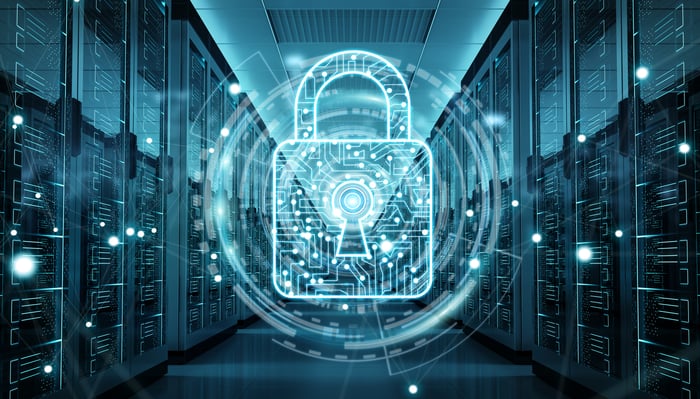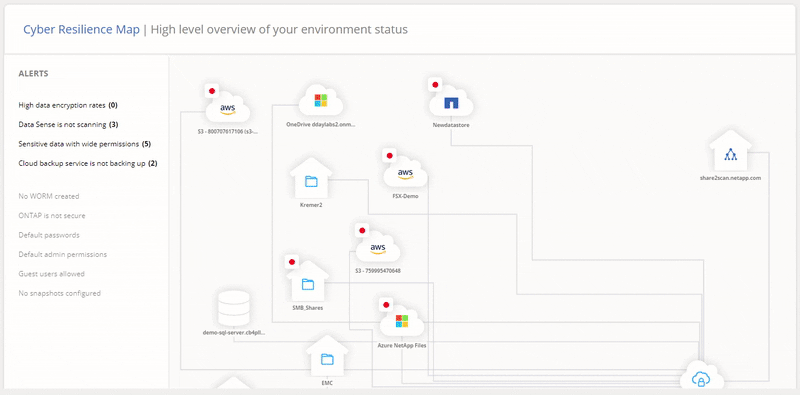More about NetApp Ransomware Protection
- What Should Your Data-Centric Ransomware Protection Include?
- Anti-Ransomware: Why Backup and Perimeter Protection Aren’t Enough
- The Zero Trust Model: What It Is and How It Affects Data Management
- Ransomware Protection Services and Solutions: A Market Overview
- IT & Ransomware: IT’s Role at the Forefront of Ransomware Protection
- Ransomware Detection: Techniques and Best Practices
- Data Security Capabilities Every IT Leader Needs To Know
- Ransomware Protection: Detection, Recovery, and Prevention
- Organization Security: Who’s Responsible for Keeping IT Safe?
- Ransomware Types: 5 Common Types of Ransomware Attack Top Security Tips for IT Teams
- Cyberstorage: Data-Oriented Security Designed for Ransomware Protection
- NetApp Ransomware Protection: A Complete Set of Data-Focused Protective Capabilities
- Ransomware Prevention and Remediation with Cloud Volumes ONTAP
Subscribe to our blog
Thanks for subscribing to the blog.
May 22, 2022
Topics: Data ProtectionAdvanced5 minute readRansomware ProtectionSecurity
Protecting against ransomware is the need of the hour, but not every solution offers a complete set of capabilities for you to do that. What kind of capabilities go into making a reliable ransomware protection solution?
Most solutions focus on protecting the perimeter of the network. But ultimately, networks are breachable. That inevitable network breach means your ransomware protection needs to extend to the data level as well. But the solutions that do offer data-level protection primarily focus on backup capabilities, without providing any proactive measures.
There is a more complete solution: NetApp Ransomware Protection.
Read on below to find out more about Ransomware Protection, or use the links below to jump down to the sections on:
- What Is Ransomware Protection?: Fighting Ransomware at the Data Level
- A Single and Automated Console To Manage Your Entire Data Security Posture
- Where Data Management and Cyber Resilience Meet
- Get Started with Ransomware Protection Today

What Is Ransomware Protection?: Fighting Ransomware at the Data Level
NetApp’s data-focused Ransomware Protection solutions combine to form a complete toolset to protect against ransomware.
With Ransomware Protection you can map and classify your data, detect abnormal user activity, manage access, and avoid costly downtime with rapid backup and restore. IT teams can use these advanced defense mechanisms to strengthen cyber resiliency and make sure the most critical data stays protected.
These capabilities provide organizations with guidance on how to prevent, detect, and recover from cyberattacks and insight to understand any potential gaps in your security posture.
These capabilities can help you align your organization with the National Institute of Standards and Technology’s (NIST) Cybersecurity Framework. But what Ransomware Protection also does is give more control over data security to the teams that manage that data.
The Essential Role of IT in the Fight Against Ransomware
Until recently, protection against ransomware wasn’t IT’s problem. The CISO was in charge of ensuring the security of the systems—all IT had to do was to make sure the network ran smoothly. But with COVID-19 changing work patterns, new vulnerabilities have opened up in systems, and the threat of ransomware attacks has grown dramatically. This has put a new emphasis on IT’s role in stopping cyberattacks.
Companies now assume that data has already been compromised. In this new zero-trust environment, IT teams and storage admins are the last line of defense. As the stewards of the data, it’s up to IT to find solutions that can reduce the risks of ransomware attacks, respond when attacks occur to restore data, and ensure cyber resilience. Any effort to reduce the threat of data corruption by IT improves the overall posture of the organization.
What NetApp Ransomware Protection Covers
NetApp Ransomware Protection is a complete set of capabilities that enable you to manage and refine your cyber resiliency across a variety of working environments and better respond to threats as they occur.
Ransomware Protection enables you to:
- Protect your data, mitigating your data estate vulnerabilities and lowering the chances for cyberattacks to successfully execute
- Detect anomalies to minimize the impact of ongoing malicious activity, and
- Recover quickly with fast data restores that can help you avoid costly downtime without paying the ransom.
Let’s take a look in depth a what Ransomware Protection does to meet each of these goals:
Protect: Ransomware Protection helps you assess and refine your data security posture to mitigate vulnerabilities in your data estate.
- Analyze file access permissions
- Categorize and locate sensitive data
- Block malicious files
- Establish rapid, granular recovery points
- Efficiently replicate data for backup and disaster recovery in multiple accounts and regions
- Create a logical air gap and flexible secure data retention
- Harden your environment and correct security exposures on your storage system
- Learn normal user file access behavior
Detect: Ransomware Protection can quickly identify data usage anomalies to help you minimize the impact of ongoing malicious activity.
- Detect data and storage anomalies
- Trigger alerts based on storage behavior
- Spot unusual user behavior, performance metrics, and file access patterns
- Identify attempted mass file encryption, deletions, and exfiltration
- Block malicious user accounts
- Initiate a NetApp Snapshot recovery point as abnormal activity occurs
Recover: Ransomware Protection gives you the tools to avoid costly downtime and recover rapidly.
- Asses the damage with file-level forensics to identify which files to restore
- Restore data instantly from a specific point in time at the block level
- Place the data directly in the location you specify
- Choose whether to restore full volumes or individual files
- Locate the last uncorrupted copy of the data with indexed catalog
- Analyze the impact of the attack with data mapping and classification

Ransomware Protection offers a complete set of data-centric data protection.
The Ransomware Protection Dashboard
In addition to all the comprehensive set of capabilities that NetApp has to protect your data from cyber threats, there is now a dedicated dashboard in Cloud Manager to better prepare and respond to threats as they occur.
With this dashboard, IT teams have a single pane of glass to manage their entire cyber resiliency posture with full visibility of the entire data estate, both cloud and on-prem. This single interface gives access to different tools related to ransomware protection.
The dashboard also comes with built-in best practice recommendations that score your system’s cyber resiliency and readiness. This gives you a way to identify problem areas without the overhead of searching for them yourself.
IT teams can use these advanced defense mechanisms to strengthen cyber resilience and help ensure that the most critical data stays protected.
 A single control plane to manage all aspects of ransomware protection across the entire data estate.
A single control plane to manage all aspects of ransomware protection across the entire data estate.
Learn More About Ransomware Protection Today
The ransomware threat is real enough, so there’s no need for scare tactics: it’s your data, and you know you have to protect it. There’s a better way for you to do that with NetApp Ransomware Protection.

FAQs
Can you protect against ransomware?
While there are considerable challenges involved, it is possible to protect against ransomware. But part of the solution is to change the way that you think about fighting ransomware.
Traditionally, ransomware attack protection focused solely on enhancing perimeter defenses to make sure nothing could penetrate the network. With today’s zero trust approach to cyber resilience, users need to assume that attackers have already breached the network, so protection needs to be enhanced at every level, including where the data resides.
What is the best defense against ransomware?
The best defense against ransomware is to build a solution that protects the target of the ransomware itself—your data. But this is a revolution in thinking about ransomware protection.
Up until recently, it was generally accepted that the best way to prevent ransomware attacks, or any kind of malware intrusion, was to secure the network perimeter. If nothing bad could come in, the thinking went, nothing bad can happen to your system. But that defense proved to be less than reliable as ransomware attacks continue to make it into networks.
A cohesive ransomware protection solution not only protects the network but monitors data usage to be aware of changes that indicate malicious activity so users can quickly respond and recover.
What is the solution for ransomware?
Unfortunately, there isn’t a one-size fits all solution for ransomware. The threat is always evolving and too complex for that. The only way that users can try to protect themselves is to adopt holistic approaches to ransomware protection that focus on the data first and then build out defenses from there. This way, even if ransomware does infect your system, there is a chance to prevent it from causing harm, or counteracting it without paying the attackers.
